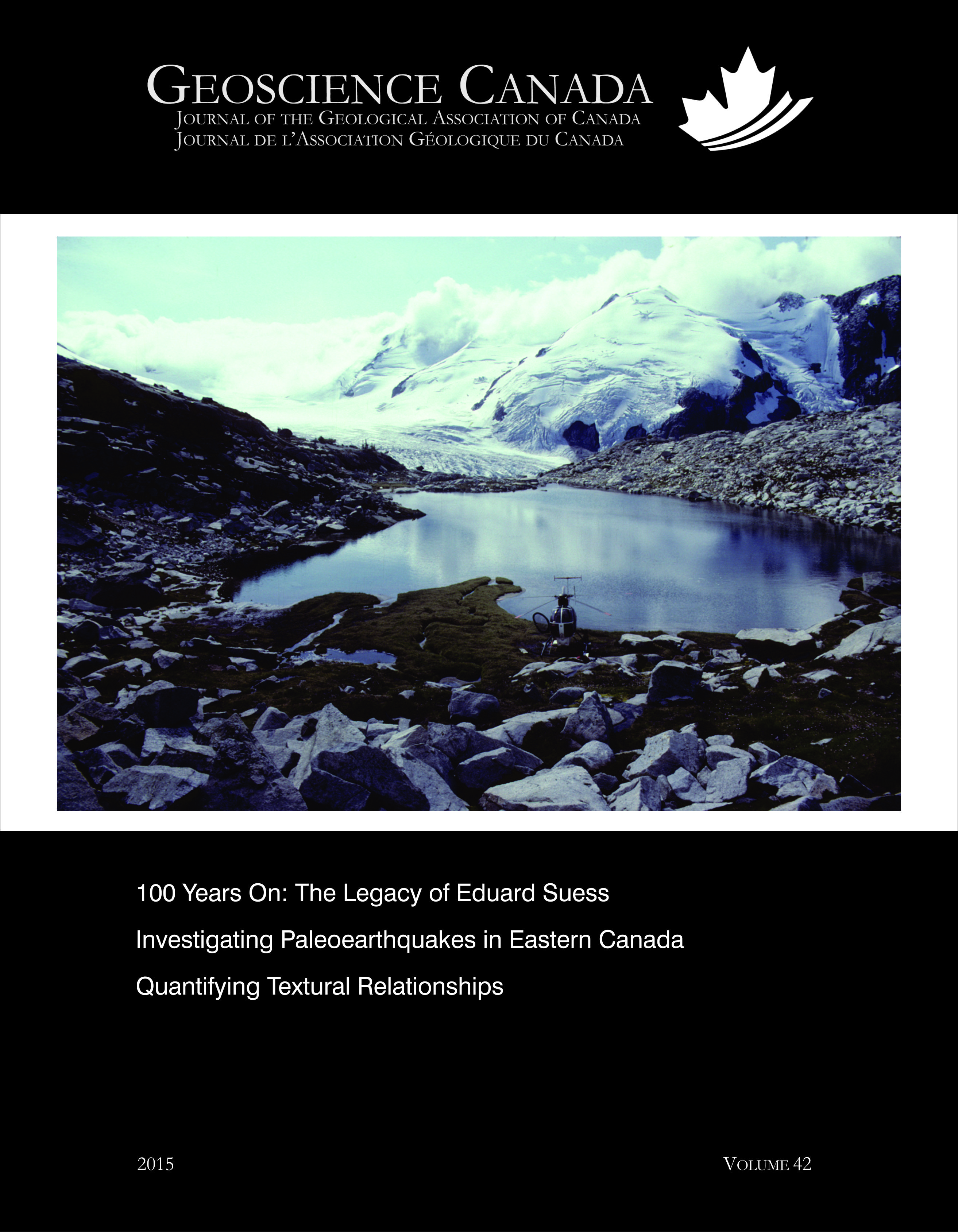Articles
The Founder of Modern Geology Died 100 Years Ago: The Scientific Work and Legacy of Eduard Suess
Published 2015-04-10
How to Cite
Şengör, A. C. (2015). The Founder of Modern Geology Died 100 Years Ago: The Scientific Work and Legacy of Eduard Suess. Geoscience Canada, 42(2), 181–246. https://doi.org/10.12789/geocanj.2015.42.070
Abstract
Eduard Suess (1831-1914) is probably the greatest geologist who ever lived. He died 100 years ago and left us the modern geology as we know it. His work ranged from paleontology through stratigraphy, geomorphology, urban geology, finally to tectonics. His magnum opus was the multi-volume Das Antlitz der Erde (The Face of the Earth), the greatest book in the history of geology. It is a complete description of the geology of the planet from the viewpoint of the theory of thermal contraction in Constant Prévost’s version, as modified by Suess. For all the admiration it caused it has been largely left unread and as a consequence geology lost some half a century until the invention of plate tectonics in 1965. This was in part, because the way Suess wrote the book made reading very difficult. The following is not a biography of Suess, but a review and evaluation of his work during the centenary of his death.RÉSUMÉ
Eduard Suess (1831-1914) est probablement le plus grand géologue qui ait jamais vécu. Il est mort il y a 100 ans et il nous a laissé la géologie moderne telle que nous la connaissons. Son oeuvre va de la paléontologie à la stratigraphie, la géomorphologie, la géologie urbaine, enfin jusqu’à la tectonique. Son magnum opus est le multi-volume Das Antlitz der Erde (La Face de la Terre), le plus grand livre de l’histoire de la géologie. C’est une description complète de la géologie de la planète du point de vue de la théorie de la contraction thermique dans la version de Constant Prévost, modifiée par Suess lui -même. En dépit de l’admiration dont il était l’objet , ce grand livre a été très peu lu. En conséquence la géologie a perdu près d’un demi-siècle jusqu’à l’invention de la tectonique des plaques en 1965. C’est en partie a cause de la façon dont Suess a écrit le livre qui rend la lecture très difficile. Ce qui suit n’est pas une biographie de Suess, mais un examen et une évaluation de son travail à l’occasion du centenaire de sa mort.
